I was in the Roman Forum the other day to see Santa Maria Antiqua… It is the oldest church in the Forum, connects to the Imperial Palace, was the one-time seat of the Bishop of Rome, and it has some killer frescoes. Due to ongoing renovations and excavations, it is rarely open – this year it allowed visitors in for a few months, and the last time it did so was 1980. Sadly, as of tomorrow (Sunday, 10/30/16) it will be closed for who knows how long (the figure I heard was 20 years). Since you missed your shot, let me provide it for you!
First things first… Behold, the first basilica in the world!
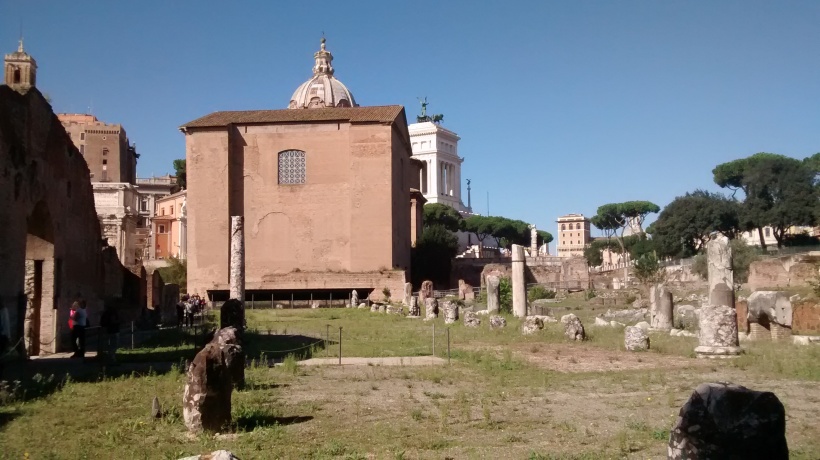
No, it is not the brick building. That’s the old Roman curia – before it was a Church thing, it was a Roman thing. You are looking through the basilica, which is a ruin. You can see the pillars sticking up out of the ground. Once again, before it was a Church thing, it was a Roman thing. We baptized both ideas, and they stuck around.
Another first… Behold, the first real CCD classroom on planet Earth!
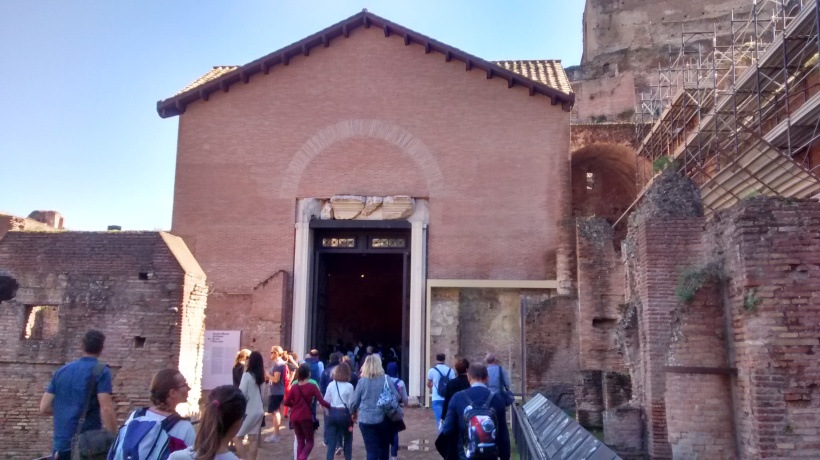
Before there was coffee and donuts at RCIA, there was the Oratory of the 40 Martyrs. If you teach Sunday school, here you can go back to your roots. Let’s take a look inside, shall we? (Click to enlarge the photos.)
The Byzantine influence is almost as clear as the weathering. But all throughout the site there are slightly different styles, reflecting the fact that there were many different patrons and artists at work over the ages. Like the rest of the Forum, there are layers, and analyzing this site is made especially difficult by the unique character these frescoes have among contemporary Roman works.
Here’s the exterior of the church:
Santa Maria Antiqua is called “Antiqua” for a reason… She’s been around since the 5th Century! After Constantine, the Forum became more than just a safe place for Christians, it became an opportune place for worship.
Into the church we go!
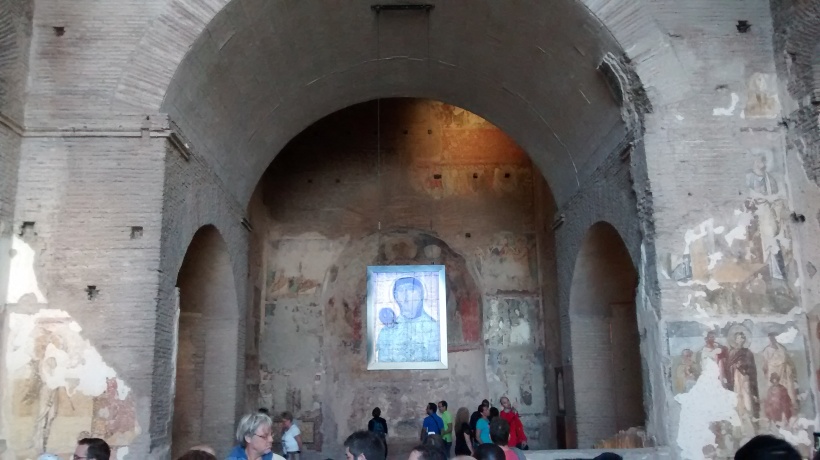
The hanging picture is called an “iconostasis.” Notice the use of arches, with the apse in the back (surrounding the iconostasis). Many of the frescoes are in rough shape, but we will look at some of the better preserved ones.

Yes, even the pillars were decorated. See the one on the right there? This place was like stepping into an ecclesiastical coloring book. Every inch was covered, it seems.
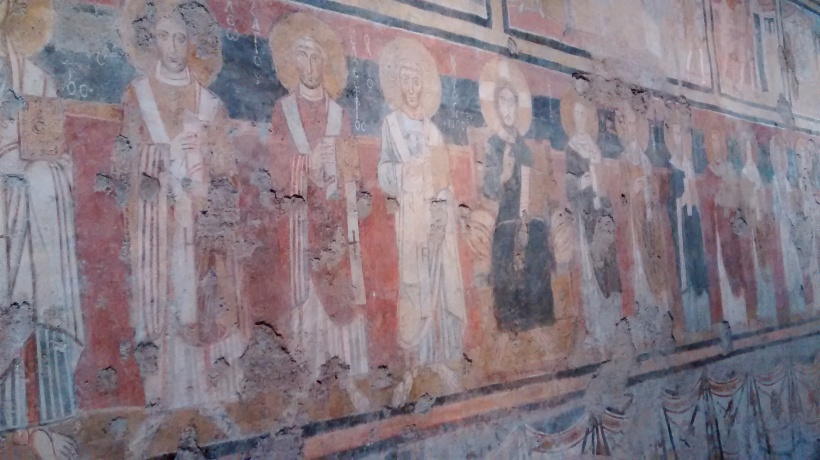
Here is an image of some the frescoes in one of two “corner chapels,” on the right side of the nave near the back… It is called the “Chapel of Physicians” (or the “Chapel of the Medical Saints”), where there would be constant intercession for the sick, whether the infirm were present or not. (The other is the “Chapel of St. Theodotus” on the left.) Apparently St. Francis visited this place, by the way, when he was in Rome.

The apse has the earliest Roman image of Mary as a Queen, and the image of the Cross (in the Chapel of St. Theodotus) is notable as well…
Pope John VII was totally enamored with Santa Maria Antiqua. Not only did he commission a ton of work on the church, he also moved there, way back at the start of the 8th Century before there was an Associated Press to misunderstand why he might do such a thing. However, only about a hundred years later, an earthquake would cover much of the church, leaving it dormant for 1,000 years or so. (The Chapel of the Medical Saints apparently remained accessible, and somehow people forgot there was a church attached!)
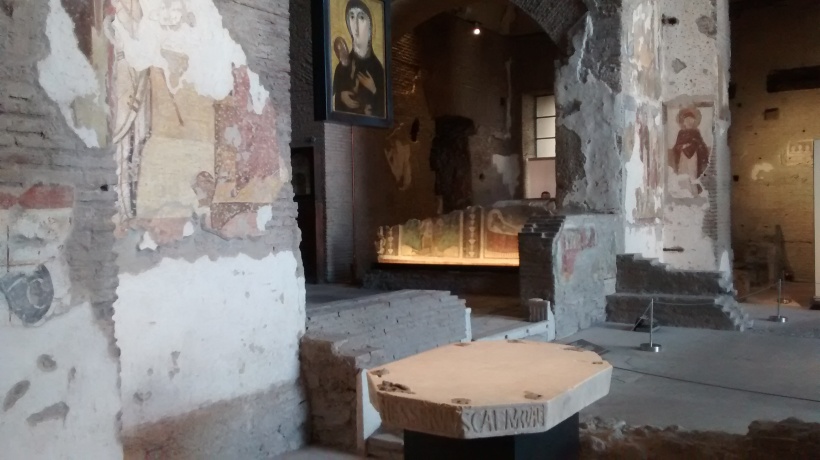
Here there was a main altar and a “holy table” further back near the apse where the gifts would have been prepared.

To make sure that everyone understood that Christianity was not ditching its Jewish roots, there was significant emphasis on the Old Testament. Here is a sarcophagus with stories of Jonah and some more frescoes of OT events:
It was lunch time in Rome, which beckoned, but in the end the platform won out. The long climb was definitely worth it. Panning left to right:
There’s just too much to point out. Sorry. But do notice that the corner of the church is on the top left. The rest of the view is mainly out towards the Quirinal Hill and Capitoline Hill (the Forum is on the Palatine).
Considering that you will probably never actually be inside this amazing church… you’re welcome for the quick glimpse inside!
Post by: Eamonn Clark














One thought on “Some art in the Roman Forum!”
Comments are closed.